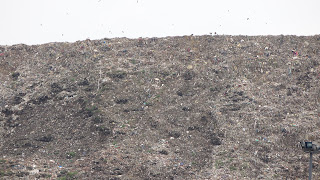Mumbai, October 10, 2017:
IFAT India 2017 was held at the Bombay Convention and Exhibition Centre, Goregaon from 26th to 28th September 2017 that brought together local and international representatives from associations and, state governments, industry leaders and leading companies to highlight and discuss challenges and solutions in the water, sewage, refuse and recycling sector.
IFAT India 2017 was inaugurated by
Shri Vijay Shivtare, Water Minister of Maharashtra, Mr. Ajay Mathur, Director General, The Energy and Resources Institute (TERI), Ms Ann Ollestad, Consul General, The Royal Norwegian Embassy, Ms. Ulrika Sundberg, Sweden Consul General, Mr. Roland Knitschky, German Association for Water, Wastewater and Waste (DWA) among other industry players.
IFAT India is India's leading trade fair for water, waste water, waste and recycling. The trade show provided an enormous platform to industry experts, policy makers and business leaders to discuss regional strategies on numerous environmental challenges and seek solutions through formal interactions.
IFAT India 2017 was a three- day trade show which saw over 184 participants from 18 countries. Some of the top participants included market leaders like L&T, Thermax, Ion Exchange, Ramky, Aqseptance Group, Endress+Hauser, Excel, Kirloskar Brothers, Kishor Pumps, Tata Projects, Wilo, Siemens, Lanxess, Astral Poly, Xylem, CRI Pumps, LG Chem, Wipro Water and many more. China, Germany, Austria and Switzerland were the few international country pavilions that were featured in the 2017 edition.
On the conclusion of IFAT India 2017, Mr. Bhupinder Singh, CEO of Messe Muenchen India, said, “India has an immense potential for environmental protection and waste management. Scarce water resources, rapid industrialization, extensive agriculture and enormous waste volumes pose a great challenge to the country. Thus, the 5th edition of IFAT India focussed on the latest environmental issues and their solutions. IFAT India 2017 also provided a platform for all the industry players, associations and government representatives, to connect through formal interactions. We saw a great response from national and international participants and we hope to keep delivering a better trade show every year.”
The trade fair witnessed technical presentations, panel discussions and tutorials, where industry experts – both from India and overseas –who shared their knowledge with the audience at the Innovation Exchange. There was also a dedicated area for training, live demonstrations, product presentations and skills contests, running parallel to the show.
The Products in Practice session provided exhibitors with a unique interactive way to showcase their product highlights. The innovations were presented in a realistic working situation and thereby impressed the visitors with an eye-catching experience.
The Active Learning Centre was a new platform successfully introduced to the participants of IFAT India 2016 that was continued in 2017. This was the interactive element of the event. It offered innovative ways to network with both visitors and other experts of the environmental technologies sector.
Along with the trade exhibition IFAT INDIA with its partners concurrently organized multiple interactive programs, to name a few - Air Quality Management Workshop by SDG (Sustainable Development Goals Foundation); Workshop on entrepreneurship in waste management by ISWA (International Solid Waste Association); Biogas Panel by GIZ, German Biogas Association and Indian Biogas Association; Water Skills Competition by Skill Council for Green Jobs, GIZ and DWA.
IFAT INDIA hosted an Environmental Technologies Conference in association with TERI, which focused on issues related to Air Pollution, Solid Waste Management and Urban Water Management in the context of Sustainable Development. This edition witness a new initiative Business to Government Forum which provides states an ideal platform to announce new projects, to find matching solutions for new tenders and to inform participants about the latest policies in the environmental sector.









